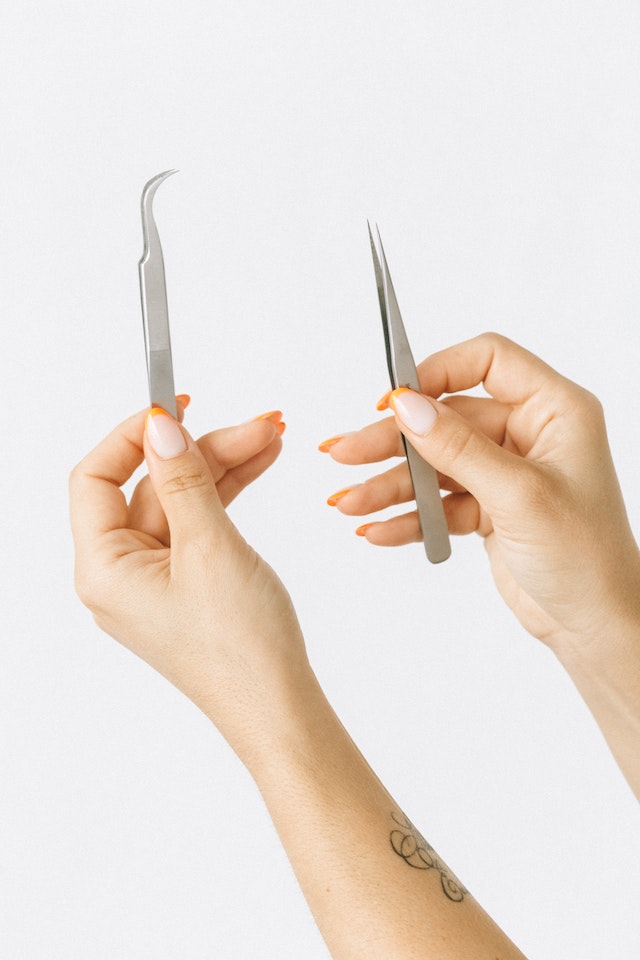
Microblading has become a popular cosmetic technique to shape or fill brows. It’s a great choice for people who want to correct or redefine thinning eyebrows or enhance their brows in a natural-looking, long-lasting way.
What Is Microblading?
Microblading is a type of cosmetic tattoo or semi-permanent makeup involving stacked fine needles which insert pigment into the dermis. This creates natural-looking strokes tinted to fit your eyebrow color.
There are several different types of microblading, including powder brows, ombre brows, classic hairstroke brows, and a combination option. All of these choices strive to give you full, fluffy eyebrows that fit with your skin and make you feel more confident.
Pros of Microblading
- Safe & Effective with No Pain
Microblading is a painless procedure that has been proven safe and effective. If you’re worried about side effects, it’s rare to experience negative effects from the procedure. This means there is also a very low risk of skin damage.
- Saves Time in the Long Run
While the initial and touch-up procedures can take a few hours at a time, microblading ultimately saves you time because you no longer have to worry about plucking, waxing, or removing unwanted eyebrow hair.
- No Smudging
Eyebrow pencils and other types of temporary makeup smudge easily, especially if you are an athlete and often sweat or splash water on your face. Microblading avoids this nuisance because it is a type of semi-permanent makeup that is made to last.
- Natural-Looking Results
Not only does microblading provide long-lasting, fuller brows, it also makes your enhanced brows blend naturally with your skin tone. There are also different options—such as regular brows and powder brows—for your skin type to ensure that your eyebrows look the best they can be. Whether your skin is dry, oily, or a combination, there is a microblading option that will look smooth and natural on you.
Cons of Microblading
- Long Sessions & Heal Time
Like any other skin tattoo, microblading sessions can take a few hours, especially due to the precision of the procedure. Touch-up sessions are required for most people to check how the healing process is going and to fix any fading that may occur. While microblading saves time in the long run, the affected area must properly heal first in order to reap all the benefits that come with the procedure. The entire healing process can take up to 3 years.
- Infection or Allergic Reactions
As with any kind of tattoo or makeup, there is always the possibility of an adverse reaction, such as an infection or allergy. While this is rare with microblading, allergic reactions can occur depending on the type of ink and numbing cream used, as well as after-care products. Infections can result from improper cleansing and sterilizing of needles. If you’re interested in microblading, make sure to vet each company and read their reviews to make sure they are professionals who properly sterilize their instruments.
- Complicated Pre- and Post-Care
There are many factors to consider before you make a microblading appointment, two of the most crucial factors being your skin condition and overall health. While it’s true that different skin types react differently to microblading, not all of these reactions are as dramatic as an infection or allergic reaction. Some skin types—usually on the oiler side—simply have a harder time retaining pigment, so the results may not appear as desired.
In addition, microblading is not recommended for clients with certain health issues, such as uncontrolled diabetes, epilepsy, and even the common cold. Even if your skin is in perfect condition, you may need to consider your health in general before making a microblading appointment. Professionals also recommend that you avoid taking certain over-the-counter medications, doing intense workouts, drinking alcohol or caffeine, tanning, and doing other potentially harmful or disruptive activities before the procedure.
For post-care, there’s a similarly detailed list of how to properly care for your newly sculpted brows in order to avoid brows healing unevenly, fading more quickly, or getting infected. This list includes wiping the area frequently to absorb excess lymph fluid, washing the area twice a day, avoiding the use of abrasive cloths, and avoiding cleansing products containing acids or exfoliants.
Activities to avoid after the procedure include picking or rubbing the area, swimming or going into a hot shower/bath, working out excessively (sweat will make the pigment fade), sleeping on your face for the first 10 days, and using makeup on the area. There’s also a post-care ointment given after every microblading procedure that must be applied in a specific way and in very small amounts.
At the end of the day, it’s up to you to evaluate the pros and cons of microblading and decide if it’s right for you. Like any other cosmetic tattoo, there are advantages and disadvantages to the procedure and the effects that could result from it. While no one can guarantee a flawless microblading experience, talking to a professional and going to a reputable provider can make the microblading experience much more enjoyable and beneficial in the long run.







